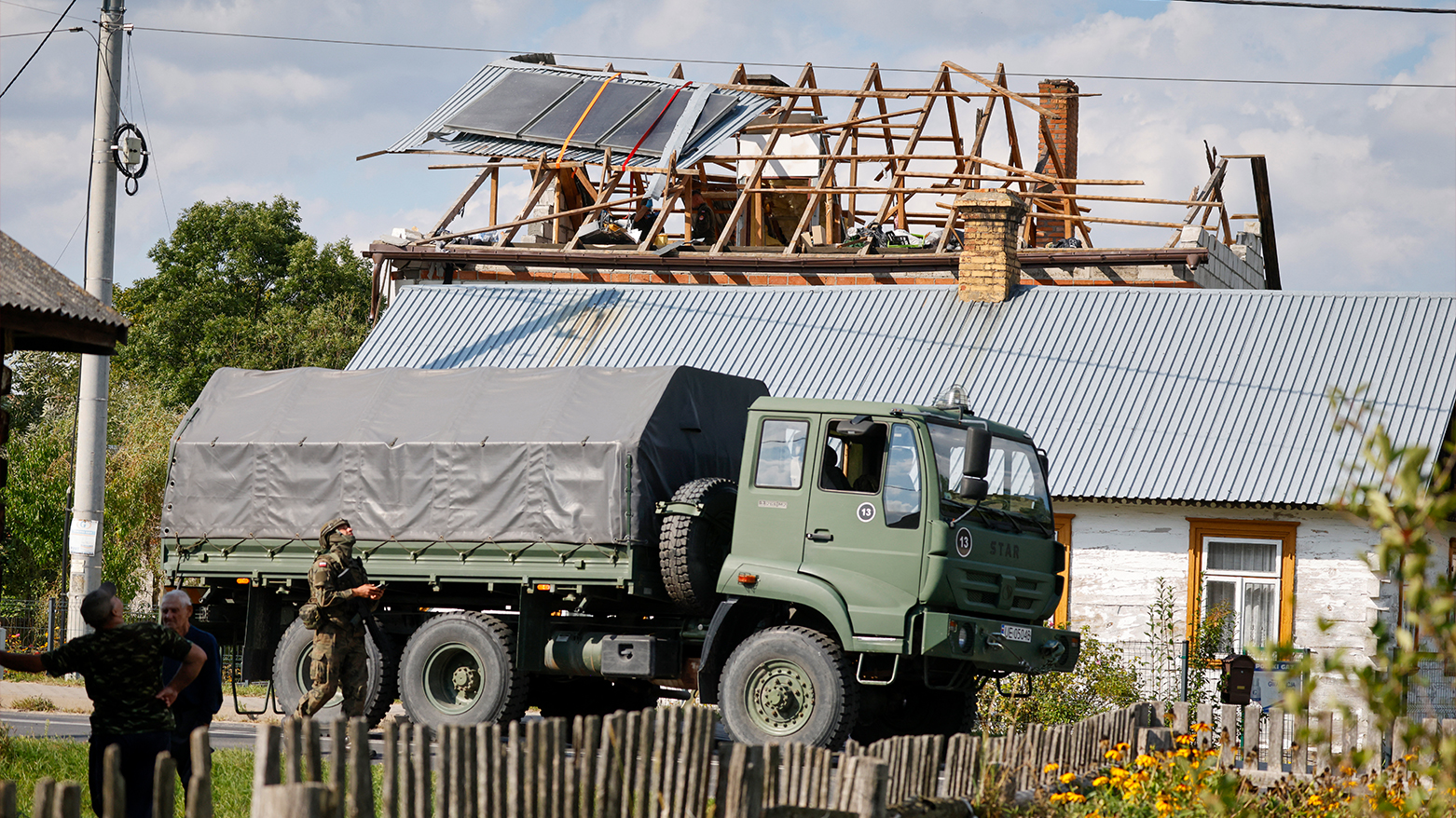Putin ‘Testing NATO Unity’ After Russian Drones Violate Polish Airspace, EU Warns
Russian drones violate Polish airspace 19 times, marking largest NATO breach since Ukraine invasion. EU warns Putin is "testing NATO unity." Poland consults under Article 4; no casualties reported.

ERBIL (Kurdistan24) – European leaders sounded the alarm on Wednesday after multiple Russian drones crossed into Polish airspace overnight, marking the largest such incident on NATO territory since Moscow’s invasion of Ukraine in 2022.
Polish Prime Minister Donald Tusk told parliament that at least 19 violations were recorded over seven hours, some drones traveling hundreds of kilometers inside Poland, with nine crash sites located so far. Dutch F-35 fighter jets were scrambled to support Poland in intercepting some of the drones.
“This is a game changer,” said European Union foreign policy chief Kaja Kallas. “What Putin wants to do is to test us—really how far he can go. And every time he is bolder, because our response has not been strong enough. What happened in Poland is clearly a message to test our unity.”
Polish Defense Minister Władysław Kosiniak-Kamysz said on X that more than 10 drones had entered Polish airspace during the night. Tusk later confirmed that 19 had been identified, the first violation at 11:30 p.m. Tuesday and the last around 6:30 a.m. Wednesday.
“This is the first time in this war that a significant portion of drones came directly from Belarus, not from Ukraine due to errors or provocations,” Tusk said. “That changes the nature of the threat entirely.”
US President Donald Trump on Wednesday referred to Russian drones "violating" NATO ally Poland's airspace in a social media post, after the White House said he was tracking reports on the intrusion.
"What's with Russia violating Poland's airspace with drones? Here we go!" Trump wrote on his Truth Social platform. The White House announced he would soon speak with his Polish counterpart Karol Nawrocki.
Local officials said a house was damaged in the village of Wyryki in the Lublin region, though no casualties were reported.
NATO spokesman Col. Martin O’Donnell confirmed that the alliance had engaged potential threats in its airspace for the first time, with Dutch F-35s helping Poland intercept drones. “The alliance is committed to defending every kilometer of NATO territory, including our airspace,” he said.
Tusk said consultations took place under Article 4 of the NATO treaty, which allows members to call urgent meetings when their security is threatened. The move fell short of invoking Article 5, the collective defense clause.
German Defense Minister Boris Pistorius dismissed claims that the drones had strayed off course. “There are definitely no grounds to suspect this was a mistake. These drones were very clearly put on this course deliberately,” he told parliament.
Russia’s Defense Ministry insisted it did not target Poland, saying its strikes were directed at Ukraine’s military-industrial facilities in the west of the country. In an unusual statement, it said Moscow was willing to hold consultations with Warsaw.
Belarusian General Pavel Muraveiko, meanwhile, suggested that drones may have “lost their course” after being jammed, claiming Belarusian forces had tracked the objects and warned Polish and Lithuanian counterparts.
But European leaders said they believe the incursions were deliberate. “Russia’s war is escalating, not ending,” Kallas said in Brussels, urging stronger sanctions.
Ukrainian President Volodymyr Zelenskyy called the incident “an extremely dangerous precedent for Europe,” warning that Moscow “always tests the limits of what is possible and, if it does not encounter a strong response, escalates further.”
He noted that this was not a single drone crossing but at least eight aimed directly at Poland.
UK national security adviser Mark Lyall Grant said the incident was an escalation but cautioned there was not yet sufficient evidence to call it an intentional attack on NATO. Still, analysts warned of NATO’s lack of preparation.
“NATO states, even frontline ones, have clearly not prepared for the type of war happening now,” said Phillips O’Brien, professor of strategic studies at the University of St. Andrews.
The drone intrusion came just three days after Russia launched its largest aerial assault on Ukraine since the start of the war.
Ukraine’s Air Force said Moscow fired 415 strike and decoy drones, 42 cruise missiles, and one ballistic missile overnight. Air defenses intercepted 386 drones and 27 cruise missiles. At least one person was killed and five injured, with homes and businesses damaged.
Meanwhile, Russia claimed to have downed 122 Ukrainian drones over various Russian regions, including annexed Crimea and the Black Sea area.
The violation of Polish airspace—on a scale never seen before—has rattled NATO members, particularly those in the Baltic states. Lithuania, Latvia, and Estonia voiced grave concern, saying the incursion underscored the threat Russia poses not only to Ukraine but to the alliance as a whole.
“This was not a course correction mistake,” Pistorius said firmly. “It was deliberate.”
With tensions rising, Poland has warned that further provocations could force a stronger response. For now, NATO leaders are weighing the balance between deterrence and escalation, while Putin appears to be probing just how far the alliance is willing to go.
Updated in Sep. 10, 2025, 7:14 PM
